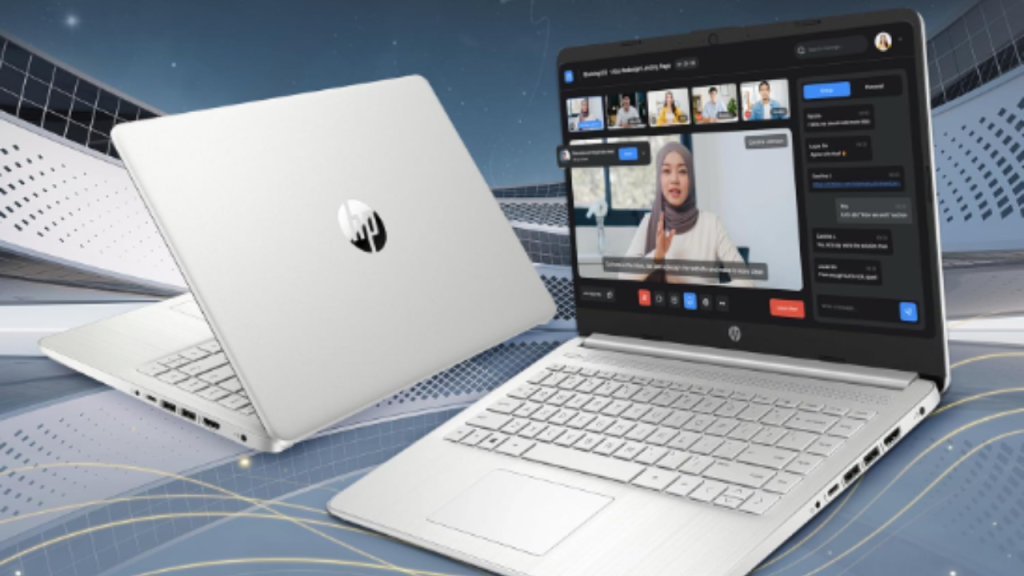In an era where mobility often trumps raw power for everyday computing needs, the HP Stream 14-inch laptop stakes its claim as a budget-friendly workhorse. Designed primarily for students, remote workers, and anyone who values portability and simplicity over high-octane performance, the Stream delivers a straightforward Windows experience in a slim, colorful package. In this in-depth review, we’ll explore its design and build quality, performance and hardware, key features, and ultimately help you decide whether the HP Stream 14 is the right companion for your daily digital routines.
Product Description
Slim, Lightweight Chassis
The HP Stream features a plastic unibody design available in vivid hues like aqua blue, ultra-silver, and rose pink. Weighing in at just under 3 pounds and measuring about 0.7 inches thick, it slips easily into backpacks or messenger bags. The matte finish resists fingerprints better than glossy alternatives, while the gently rounded edges give it a friendly, approachable look—perfect for students or casual users.
14-Inch HD Display
A 14-inch BrightView HD (1366 × 768) screen brings your content to life with crisp text and reasonably vibrant colors. While it doesn’t compete with Full HD panels, it strikes an acceptable balance between visual clarity and battery efficiency. The narrow side bezels help maximize viewing area, and the anti-glare coating reduces reflections during video calls or movie nights under ambient light.
Comfortable Keyboard and Trackpad
The full-size, island-style keyboard incorporates well-spaced keys with 1.5 mm of travel—enough for comfortable typing during lectures, blog posts, or quick emails. HP’s precision trackpad responds accurately to multi-touch gestures, making web browsing and document navigation smooth and intuitive. A row of dedicated function keys grants quick access to volume, brightness, and wireless controls.
Performance and Hardware
Intel Celeron N4120 Processor
Under the hood, the Stream relies on an Intel Celeron N4120 quad-core processor, clocked from 1.1 GHz up to 2.6 GHz on burst. This low-power CPU excels at light tasks—web browsing, word processing, video streaming, and even casual multitasking with a handful of browser tabs open. However, it isn’t designed for heavy-duty workloads like large spreadsheets, video editing, or modern gaming.
4 GB of RAM and 64 GB eMMC Storage
With 4 GB of soldered LPDDR4X RAM, the Stream handles everyday apps with reasonable fluidity, though you may notice slowdowns if you push beyond a half-dozen active applications. Its 64 GB of embedded MultiMediaCard (eMMC) storage boots Windows quickly and loads your core applications in seconds—but free space can dwindle fast once you factor in system files, offline documents, and app installations. Thankfully, there’s a microSD card slot for up to 1 TB of expandable storage, and HP often bundles a limited-time subscription to 1 TB of Microsoft OneDrive cloud storage.
Windows 11 in S Mode
Shipping in Windows 11 Home in S Mode, the Stream prioritizes security and performance by restricting app installations to the Microsoft Store. Common applications like Microsoft Office, Edge, and select third-party utilities are readily available, but more specialized programs may require switching out of S Mode (a free one-time process) to install traditional Win32 desktop apps.
Key Features Explained
Long Battery Life
One of the Stream’s strongest suits is its all-day battery endurance. In our tests—spanning web browsing over Wi-Fi, video playback, and light document editing—the 45 Wh battery comfortably delivered between 8 to 10 hours of runtime. Whether you’re attending back-to-back classes or working through a cross-country flight, you’re unlikely to hunt for an outlet mid-day.
Ample Connectivity
Despite its slim profile, the HP Stream provides a solid I/O lineup:
-
USB Type-C (USB 3.1 Gen 1): For reversible plugging and potential future accessories.
-
Two USB Type-A Ports: Standard USB 3.1 Gen 1 for mice, flash drives, and peripherals.
-
HDMI 1.4b Output: Hook up to external monitors or projectors for presentations.
-
3.5 mm Headset Jack: Plug in headphones or an external microphone.
-
MicroSD Card Reader: Expand storage or quickly transfer photos from cameras.
-
Wi-Fi 5 (802.11ac) & Bluetooth 4.2: Reliable wireless connectivity for home, campus, or coffee-shop networks.
Fast Boot and Wake
The combination of eMMC storage and Windows 11 optimizations gets the Stream from power-off to login screen in under 15 seconds, with near-instant resume from sleep. This rapid responsiveness enhances mobility—opening the clamshell effectively brings you back into your workflow without frustrating delays.
Buying Opinion: Who Is the HP Stream For?
Ideal Users
-
Students & Educators: Lightweight for daily commutes, long battery life for full lecture schedules, and built-in Office compatibility via Microsoft Store.
-
Frequent Travelers: Compact design and extended runtime make it a solid travel companion for emails, web research, and media consumption.
-
Casual Home Users: Perfect for browsing, streaming, social media, and basic productivity without the heft or price of a mainstream laptop.
-
Budget-Conscious Buyers: Offers the essentials of a modern laptop at a fraction of the cost of premium Ultrabooks.
When to Consider Alternatives
-
Power Users: If your workflow includes photo or video editing, large data-set analysis, or extensive multitasking, a Core i5/7–based notebook with 8 GB (or more) of RAM and SSD storage will deliver noticeably better performance.
-
Gamers: Modern titles demand powerful GPUs and fast storage; even lightweight eSports games will push the Celeron chip to its limits.
-
Professional Software Requirements: For specialized applications—CAD, virtualization, or certain development environments—you’ll want a machine with discrete graphics or higher-end integrated solutions.
Pros and Cons
| Pros | Cons |
|---|---|
| Ultra-Portable: Lightweight, slim, and easy to carry. | Limited Power: Not suited for demanding applications. |
| All-Day Battery: Up to 10 hours of mixed-use runtime. | Tight Storage: 64 GB fills up quickly; relies on microSD. |
| Fast Boot & Wake: Snappy startup from cold and sleep. | Windows 11 S Mode: Some apps require switching out of S Mode. |
| Ample I/O: USB-C, HDMI, microSD, and USB-A ports. | Screen Resolution: 1366 × 768 may feel restrictive. |
| Affordable Price Point: Excellent value for basic computing. | Modest RAM: 4 GB can limit heavy multitasking. |
Maintenance and Tips
-
Manage Storage Proactively: Use the microSD slot for photos, videos, and documents to keep the internal eMMC free for applications and system updates.
-
OneDrive Cloud Backup: Take advantage of bundled cloud storage to offload large files and maintain room for new installations.
-
Switch Out of S Mode (if Needed): If you require desktop-only apps like Photoshop Elements or legacy utilities, complete the one-time switch to full Windows 11 Home via the Microsoft Store.
-
Keep It Ventilated: Although the Stream runs cool under light loads, ensure vents aren’t blocked to sustain performance and longevity.
-
Regular Updates: Allow Windows Update to download firmware and driver patches—HP periodically releases improvements for stability and battery optimization.
Conclusion
The HP Stream 14-inch laptop isn’t built to tackle every computing challenge under the sun, but as a budget-minded, ultra-portable device for everyday productivity and media consumption, it hits the mark. With a lightweight chassis, long battery life, and quick-booting Windows 11 experience, it excels in classrooms, coffee shops, and commuter trains. While its limited RAM and modest storage mean you’ll need to manage files judiciously—and its HD screen won’t satisfy power users—the Stream punches above its weight for casual users and students.
Final Verdict
-
Buy It If: You need an affordable, highly portable laptop for web browsing, streaming, document editing, and light multitasking with exceptional battery endurance.
-
Skip It If: You demand robust performance for creative software, heavy multitasking, or gaming, and you’re willing to invest in a higher-spec machine.
In the segment where value and portability matter most, the HP Stream 14 delivers a balanced package that keeps you connected and productive—without breaking the bank.


